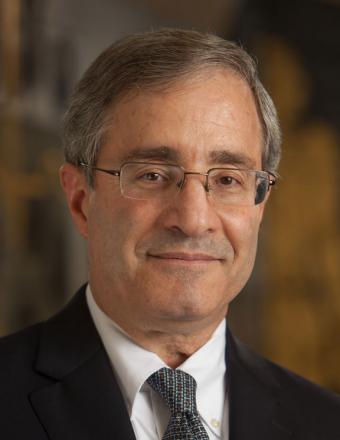Dr. Jack Elias’ research into the molecular workings of lung diseases such as asthma and idiopathic pulmonary fibrosis has implicated a key protein, chitinase 3-like-1 (CHI3L1) as having a key role in each. In his work at Yale before coming to Brown last year to become dean of medicine and biological sciences, he developed antibodies in mice that act against CHI3L1.
Elias recently learned he and collaborator Dr. Geoff Chupp at Yale will receive a five-year $5-million grant from the National Heart Blood and Lung Institute to identify the best antibody to become a potential therapy for asthma, and to modify it to work in humans. Elias spoke to David Orenstein about that new research program.
What have we learned recently that has given us a lead toward developing a potential asthma therapy?
Studies over the last decade or so, many of which came from our lab, have pointed to the concept that asthma is an inflammatory disorder of the airway of the lung and that it’s characterized by a unique form of inflammation that’s called a type 2 immune response. The most recent studies from our lab have shown that this particular molecule CHI3L1 plays an essential role in the initiation and perpetuation of type 2 immune responses. As a result, any intervention that would neutralize or eliminate CHI3L1 might actually improve asthma because it would diminish type 2 inflammation.
What’s going on in the lung during a type 2 immune response?
The lung is bathed in a high concentration of cytokines, small molecules that cells use to communicate with each other. Type 2 cytokines include molecules called interleukin 13, interleukin 4, and interleukin 5. These molecules, by binding to their receptors, drive an asthma-like tissue response in the lung. The tissue response is characterized by inflammation with a particular kind of inflammatory cell called an eosinophil. It’s also characterized by a mucus response in the airway, which is called mucus metaplasia and, when chronic, eventually leads to tissue fibrosis, or scarring.
It causes thickening of the airway, it causes swelling, and it gives airways hyperresponsiveness, which means that people who have a type 2 inflammatory response seem to get more airway obstruction constriction in response to a challenge with specific agents than healthy people do.
In a lot of the circumstances where there is a type 2 immune response, it’s due to the exaggerated accumulation of cells that make these cytokines: TH2 cells and ILC2 cells. CHI3L1 controls the survival of these cells and other cells such as macrophages and the eosinophils. If you don’t have CHI3L1, lymphocytes and macrophages and eosinophils come into the lung to do their thing, but they don’t stay alive long enough to have the adverse effects.
Given what you know, what will this grant help you do?
We have generated antibodies that neutralize CH3L1. The grant is designed to allow us to take these antibodies from an experimental system to actually developing them as a drug for humans. It’s a five-year grant but everybody understands that it will take more money and time than this one grant to get this all the way to being something that is a therapeutically useful drug.
The goal of this is to get us going to the point where we either form our own company or we license this or work with an established pharmaceutical company to take it all the way across the finish line. The dream would be that we end up with a drug, at the end of the day, that allows us to have a new kind of therapy for a very common disease.
Did you realize that from 1990 to today we’ve gone from 5.2 percent of the U.S population having asthma to 8.4 percent of the population having asthma? When you think about those numbers, that’s pretty sad.
How are you going about the research?
You want an antibody that powerfully neutralizes CHI3L1 and you want an antibody that is specific for CHI3L1 that doesn’t cross-react with other proteins. So step 1 is figuring out in the panel of antibodies which ones neutralize well and which ones don’t, and which ones bind to the right protein and which ones give you all kinds of side reactions.
Then, given that you have a mouse antibody, you have to do what’s called “humanizing” the antibody. The sequences that recognize CHI3L1 you can’t change. Those are the most important part of the antibody. But all the rest of the structural pieces of the antibody can be changed from mouse sequences to human sequences so that if you give this to humans it will work well and won’t generate an immune response. Otherwise you’d get a human anti-mouse response. You might be able to give the antibody once but you’d never be able to give it again. However, once the antibody has been humanized it will be recognized by the immune system as human and can be repeatedly administered.
Those are the steps we are trying to get done in the shortest period of time.
Is this your first major research project now that you are here at Brown?
This is one of many research projects. I’ve been here a year and my lab moved up about two months ago. We’re all here, we’re all working now in Sidney Frank Hall. Things are going well.

